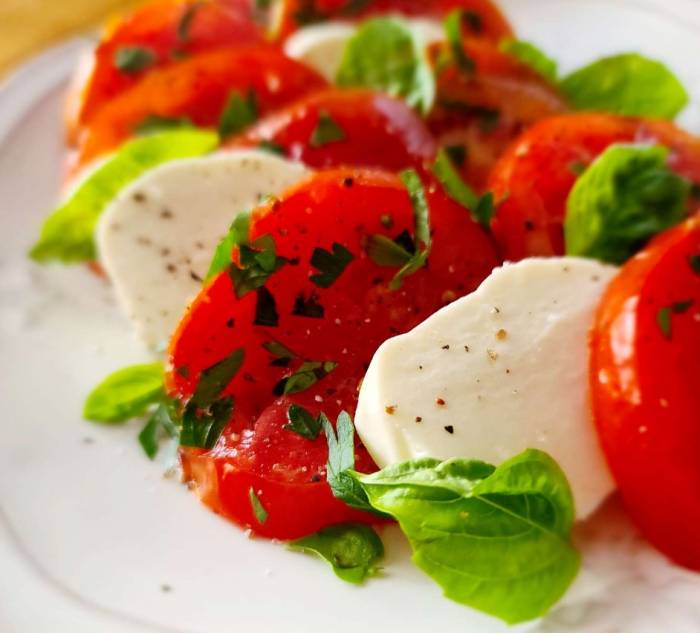Italian wines and rosés offer ideal pairings for classic Caprese salad
Fresh, high-acid whites, dry rosés, and select light reds enhance the salad’s delicate flavors without overpowering its simplicity
2025-08-05

Caprese salad, a staple of Italian cuisine, is celebrated for its simplicity and reliance on fresh, high-quality ingredients. The traditional preparation features ripe tomatoes, fresh mozzarella cheese, basil leaves, extra virgin olive oil, and a sprinkle of salt and pepper. While some versions include a dash of balsamic vinegar, many purists prefer to keep the flavors clean and focused on the core ingredients. The interplay between the sweet acidity of tomatoes, the creamy texture of mozzarella, the aromatic lift from basil, and the fruity richness of olive oil creates a balanced dish that is both refreshing and satisfying.
Pairing wine with Caprese salad requires careful consideration. The goal is to find wines that complement the salad’s delicate flavors without overwhelming them. Light to medium-bodied wines with good acidity and freshness are ideal. These qualities help match the salad’s brightness and cut through the richness of the cheese and olive oil.
White wines from northern Italy are often recommended for Caprese salad. Sauvignon Blanc from regions like Alto Adige or Friuli stands out as a classic choice. These wines typically offer citrus, green apple, and herbaceous notes that mirror the freshness of tomatoes and basil. Their crisp acidity also balances the creaminess of mozzarella and enhances the olive oil’s fruitiness. Pinot Grigio from these same regions is another popular option. Its lighter body and neutral flavor profile allow the salad’s ingredients to shine while providing a clean, refreshing finish.
Vermentino, especially from Liguria or Sardinia, is another Italian white that pairs well with Caprese salad. Vermentino often has a subtle saline quality along with citrus, pear, and herbal notes. This combination highlights the freshness of tomatoes and complements both mozzarella and basil. The wine’s gentle bitterness can echo the grassy flavors in high-quality olive oil.
Fiano di Avellino from southern Italy offers yet another pairing possibility. This white wine brings floral aromas, honeyed notes, and lively acidity that can stand up to both tomatoes’ tartness and mozzarella’s creamy texture. Unoaked or lightly oaked Chardonnay can also work well if chosen carefully. Wines from Chablis or cool-climate regions like Sonoma Coast or Oregon provide fresh citrus and mineral notes without heavy oak influence, which could otherwise clash with the salad’s acidity.
Rosé wines are also well-suited to Caprese salad. Dry rosés from Provence in France or southern Italy offer berry and melon flavors with bright acidity. These wines are light enough not to overpower mozzarella but have enough fruitiness to complement ripe tomatoes. Italian rosatos from Puglia or Abruzzo bring slightly more body, making them a good match for salads made with richer buffalo mozzarella.
Sparkling wines can be an unexpected but effective pairing for Caprese salad. Prosecco labeled “Brut” provides lightness, citrus flavors, and lively bubbles that refresh the palate between bites. Franciacorta from Lombardy offers more complexity for those who want a deeper wine experience with their salad. Other sparkling options like Spanish Cava or dry sparkling wines from California or Oregon can also work well if they have crisp acidity.
While most red wines are too tannic or heavy for Caprese salad, there are exceptions. Light reds such as young Bardolino or Valpolicella from Veneto can pair nicely when served slightly chilled. These wines have gentle tannins and bright cherry fruit that match well with tomatoes without overpowering mozzarella. Lambrusco, a sparkling red from Emilia-Romagna, is another interesting choice—especially when the salad includes balsamic vinegar or is served alongside charcuterie.
Serving temperature plays an important role in these pairings. White and rosé wines should be served well-chilled to highlight their freshness—ideally between 45°F and 55°F—while sparkling wines should be even colder at 40°F to 50°F. Light reds benefit from being lightly chilled as well, which helps emphasize their acidity and minimize tannins.
The context in which Caprese salad is served can also influence wine selection. During summer months or outdoor gatherings, lighter wines with high acidity are most refreshing. For more formal indoor meals, wines with greater complexity or minerality may be preferred.
Ultimately, choosing the right wine for Caprese salad comes down to respecting its seasonal ingredients and simple flavors. Italian whites such as Sauvignon Blanc, Vermentino, Pinot Grigio, along with dry rosés and select sparkling wines offer reliable options that enhance rather than overshadow this classic dish. A few carefully chosen light reds can also work in certain settings. The key is to maintain harmony between wine and food so that each element brings out the best in the other—a principle at the heart of Italian dining traditions.
Founded in 2007, Vinetur® is a registered trademark of VGSC S.L. with a long history in the wine industry.
VGSC, S.L. with VAT number B70255591 is a spanish company legally registered in the Commercial Register of the city of Santiago de Compostela, with registration number: Bulletin 181, Reference 356049 in Volume 13, Page 107, Section 6, Sheet 45028, Entry 2.
Email: [email protected]
Headquarters and offices located in Vilagarcia de Arousa, Spain.